People torture themselves in crazy, brutal, wonderful ways. I have a friend who recently rode a bicycle over 3,800 miles -- from Virginia Beach to Oregon -- just for the adventure of it. My roommate spent the last few months drinking an obscene number of protein shakes, tempting melanoma at the tanning salon, and lifting weights every night so that he could pull off a convincing Ultimate Warrior for Halloween. I also just met this guy who does Ironman triathlons; ergo, though awesome, he is also clearly insane.
My exquisite masochism is writing. It is through writing that I become utterly vulnerable. That Walter Wellesey Smith quote -- "There's nothing to writing. All you do is sit down at a typewriter and open a vein." -- that is writing for me. Bleeding. It is painful and draining and invasive. And yet I am irresistibly drawn to it. At three o'clock in the morning, I sit in bed and type things that no one will ever read, pieces that strip me and break me open and empty me out. And at six o'clock in the morning, I delete them for fear that someone, somewhere, someday might see them. Might see me, all broken and naked like that without even a cute pair of shoes on. Yikes.
At this point in my life, I typically write ten to fifteen pages a week. Of these, maybe 98% are a combination of lesson plans, essays for my MA classes, letters of recommendation, and work-related nonsense (like emails about who's teaching The Scarlet Letter when and who's driving whom to some up-coming conference). That leaves about one page out of fifty that I actually want to write and that gives me that delicious rush of intellectual adrenaline.
I got into teaching because I thought it would be an avenue for leading young people to this same passion -- for entrancing them with the magic of words, the powerful addiction of stories. In some ways, this has been true. My job is rich and rewarding. I love it. But I have felt, more so recently, that the greatest price of teaching writing is that I rarely have time or energy anymore to write.
But I am not old enough yet to have regrets, and since my birthday is coming soon, I am giving myself a present: time. For writing. And permission to be vulnerable.
As an example for you, dear reader, here is a piece I wrote (and recently polished but have never before published) about my first night in Japan: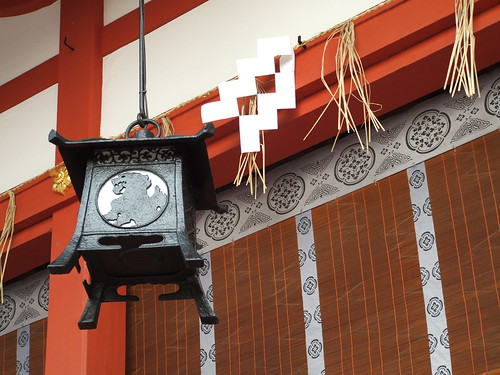
------------------------------
The tatami bites lightly into my skin, etching uniform red grooves across my shoulder blades, along the uneven ridge of spine, and down the meat of my out-stretched legs. I lie long and wide, a little castrated Vitruvian, watching the beads of sweat well up on my bare stomach, glisten, quiver, and slip noiselessly to the floor. My ribs heave. Around my head, a riot of dark curls twists into a damp halo and slowly soaks the clean, tight straw. I strain to listen, hoping to catch the shuffle of a foot or the click of a chopstick through the paper-thin walls, but there is only a vast silence beneath the coursing of blood through my own ears, the swishing rhythm of my own breath.
My damp t-shirt and jeans, shed the moment I was alone, are tossed over the solitary chair in the corner. I thought at first of running them through the washing machine, but a quick glance at the dials discouraged me; not a word is in English. Of course, even if I knew how to turn the machine on, I have no detergent, no soap. I could get my clothes wetter but not cleaner. Instead I had stripped them off, thrown them over the chair, and gotten in the shower. The water rinsed away the sweat and dust I’d gathered on my two-hour trudge from the train station, but it did nothing to relieve the trembling in my limbs. Chilled and dripping, I stepped gingerly out into the living room and realized I had no towel, no clean or dry clothes. That was when I decided to lie down on the floor.
I’ve been here — on the living room floor — for over an hour. Maybe two. Dying rays of gold play furtively along the blades of rice grass outside the open window. It must be about eight o’clock. Maybe later. I don’t really know what time the sun sets in Kansai.
“Kansai,” I whisper the word aloud, half under my breath. “Kan - sa - iiii,” I stretch it so it covers my whole tongue. It certainly sounds far from home. “I live in Kansai, the western half of Honshu,” I chirp to myself, trying to force nonchalance into a phrase that still sounds like something I’m making up. The island name, Honshu, curdles and clumps in my mouth. I try to chop the “u” short like the Japanese do, but it keeps coming out “Hon - shooo” and I feel like a stupid gaijin, a foreigner, an outsider.
Which is exactly what I am, I suppose.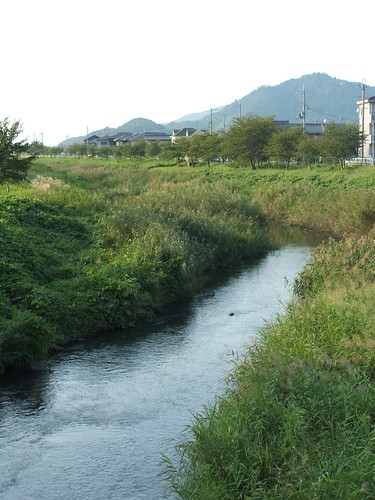
I stare at the ceiling and do some quick calculations. The company sent a Kiwi to pick me up at the train station this afternoon and show me to this apartment. My apartment, which doesn't yet feel like mine. Before arriving here, we had dropped off another new recruit and then gotten a bit lost, which I estimate doubled the distance we had to walk. The station is perhaps an hour east of here on foot. We passed a grocery store en-route, but it’s maybe forty-five minutes away, and I have to keep in mind that whatever I buy, I will have to carry forty-five minutes back. It’s possible that there is a closer grocery west of here, but it’s getting dark and everything in that direction is still undiscovered country. The chewy airline chicken breast was the last thing I ate. That was… sixteen, maybe eighteen hours ago. I should have asked the Kiwi to stop for food.
Suddenly my musings grind to a halt. The Kiwi. What was his name? I don’t remember. I try to replay the moment when he approached me outside the train station — khaki trousers, white shirt, open collar, loosened blue neck-tie. Cropped ginger hair. Green eyes? Grey? He must have introduced himself. I'll probably never see him again, but at the moment, he’s the only person I know in Japan. And I have no idea what his name is.
I force myself up onto my elbows. The last rays of sun stretch in through the window and glow red on my shins. I wonder if leaving the curtain open will be enough to wake me in the morning. Forty-five minutes to walk tomorrow for food. A few more to the train station and the city center where I should be able to buy a watch, laundry detergent, and a towel. Maybe twenty hours before my luggage and my futon should be delivered. Two and a half days until my company orientation in Osaka. One week before I start teaching. Seven thousand miles between me and anyone whose name I know. No plane ticket home.
I lie back down and fold my hands beneath my head. In the last twenty-four hours, I have severed myself from the realities of my life. I close my eyes and let exhaustion wash over me, drowning out the gnawing ache in my stomach. For the first time in my life, I am completely alone and utterly adrift.
All this happened, more or less...
Tuesday, November 10, 2009
About Writing
by
G
at
6:43 PM
0
comments
![]()
Labels: bleeding, living in japan, writing
Monday, October 12, 2009
The Crisp Freshness of Fall
(Did you miss me? Yeah. It turns out that juggling a full-time teaching career and two graduate courses whilst nursing an emaciated waif of a personal life doesn't leave much time or energy for blogging. Who knew?)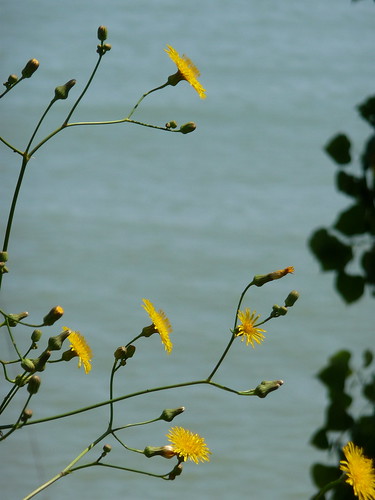
While the many perks of a three-month summer vacation cannot be exaggerated, I actually love the fall. Maybe this is true of everyone, or maybe it's just a sick, masochistic teacher thing, but in autumn when school starts back up, everything seems fresh and new and exciting to me. I don't know how people in other professions cope with having the same routine year after year. My job is a bit more like a kaleidoscope; even though many of the pieces remain the same -- the books, the room, my colleagues -- every fall we start a new year and I get a new group of students, a glorious spin of the kaleidoscope and a unique experience every time.
This year is no exception. In fact, this year's been quite surprising so far. As you may remember, last spring I boldly decided to hand off my apartment to a charmingly bohemian, tragically impoverished musician and his girlfriend (who sold sex toys) and move in with Jon and Jess -- two of the other young teachers in my building.
I find living with coworkers a fascinating and complex state of affairs; a delicate balance of the personal and the professional, of shared space and respect for privacy; a tragicomic exploration of the human experience ... kind of like college except with more disposable income. This was especially true during the summer when none of us were working and our days consisted of floating around in our friends' pools, pumping iron at the gym, watching Jon pitch, and hauling lots of empty beer bottles in for the deposit.
For the record, I consider this the perfect lifestyle.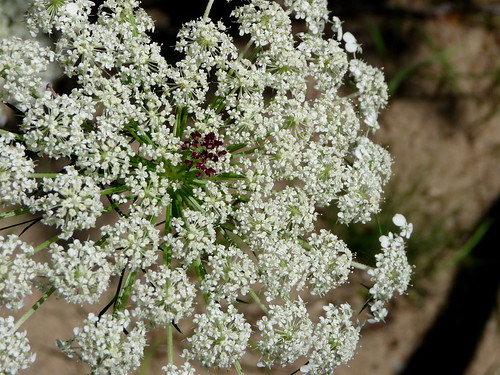
But now that it's fall we have to earn our keep. My alarm blares at 5:15 and I'm off to another adventurous day shaping young minds.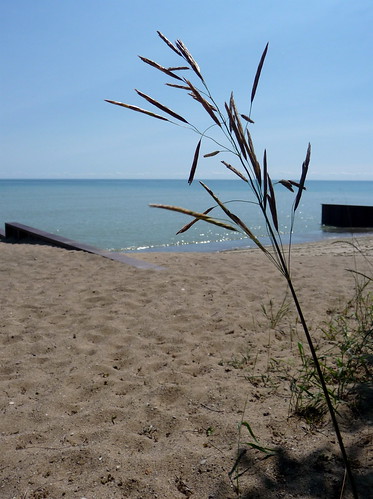
by
G
at
7:48 PM
0
comments
![]()
Labels: teacher frat, teaching
Wednesday, August 26, 2009
Photo Blog: Lake Huron
In honor of my grandpa, who was a professional artist, we take a week out of our summer every year to go to the lake and work on our own art projects. There's no TV, no internet, no cell phone service, not even a shower -- just the fam, the lake, and the art.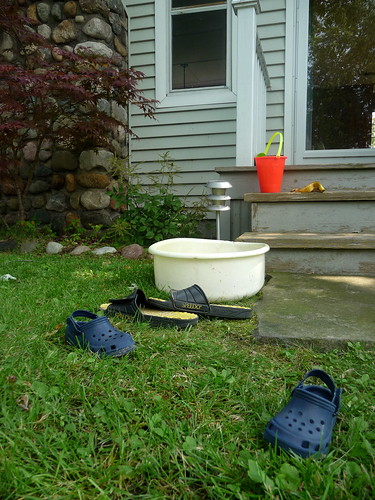
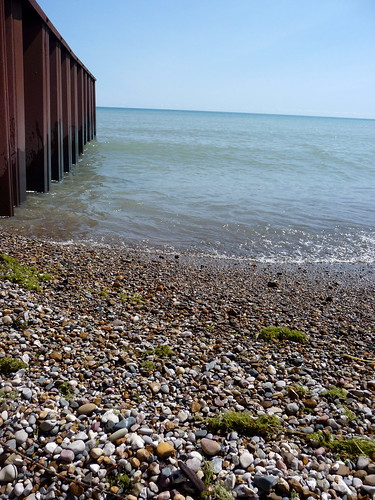

My sister-in-law dyes yarn for one of her knitting projects. This batch is a U of M stripe -- blue, yellow, and white.
Who could say "no" to this face? Not me, which is why I'm an excellent aunt.
Brother matting and framing some of his photos.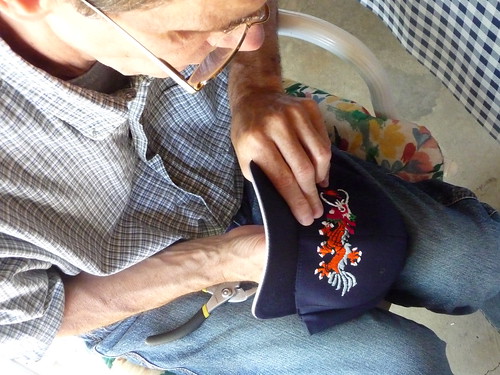
For his project this year, Dad took this dragon image that Grandpa had embroidered into the cuff of his Navy uniform in the Philippines and stitched it onto a cap.
Nephew loves when his daddy doesn't have to go to work and gets to play all week instead.
Playing bubbles on the beach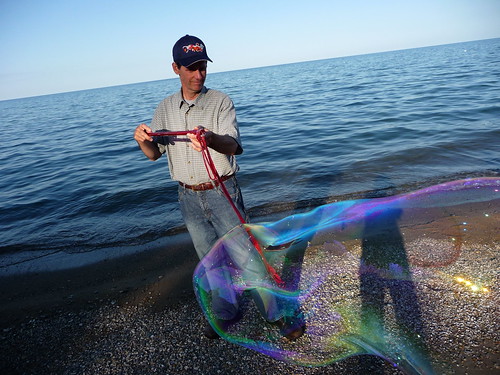

Making a cuppa tea.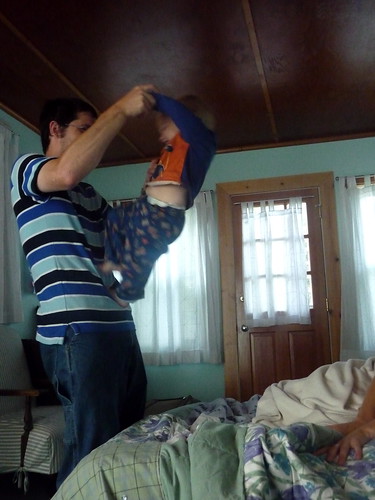
by
G
at
12:57 AM
0
comments
![]()
Labels: art, Great Lakes, Lake Huron, my family, nephew, vacation
Saturday, August 1, 2009
Fellow World Travelers
There are many great benefits to teaching English abroad that you don't realize right away. For example, you end up with very flexible ideas about English pronunciation that will allow you to understand heavy foreign accents with ease, a skill almost as valuable as actually speaking a different language.
You also become a member of a very diverse (though admittedly not very exclusive) club.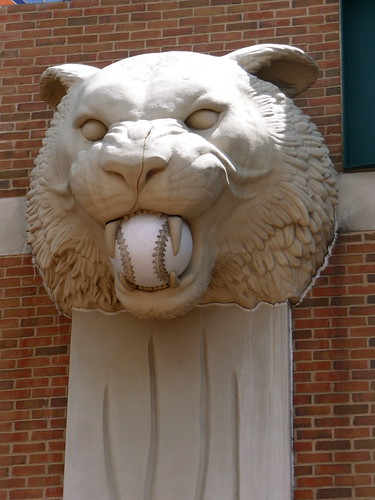
I discovered right away, of course, that the people you meet and work with abroad become very important to you. My NOVA coworkers are practically a second family to me, and even though it's been three years since I moved home, I still keep in better touch with them than I do with my high school buddies or my college roommates. In fact, anybody who's ever worked for NOVA has a special place in my heart, but it wasn't until recently that I realized that kinship extended to people who have taught English for all kinds of companies all over the world.
Through my Master's program, which is largely done online, I've met several people who are either from foreign countries studying in the US or from the US teaching in foreign countries. I always enjoy chatting with these folks, as I find that many of their experiences are not unlike my own, particularly if they are teaching in Asia. This past spring, I met one such person who was teaching in Korea, but coincidentally, he was preparing to take another teaching position in El Salvador and in the interim, came home to Detroit for a couple of weeks.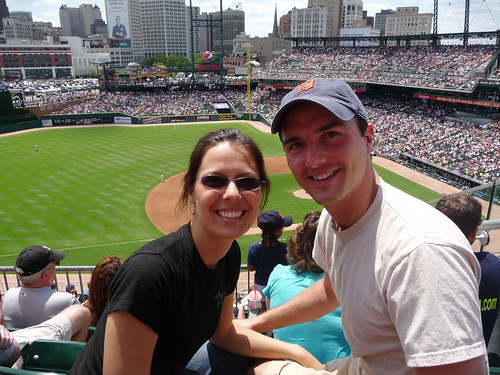
We decided he needed a bit of America's favorite pastime between Asia and Central America, so we hit up a Tigers game in D-town then spent plenty of time exchanging teaching stories and travel adventures before he was off to the airport again. I admit that reminiscing about my time in Japan and listening to his stories and future plans made me a bit jealous, but for the time being, I'll stick with the few short trips I can afford and start planning the next time I take a group of students abroad.
by
G
at
10:25 AM
0
comments
![]()
Labels: baseball, fellow travelers, teaching
Tuesday, July 28, 2009
Last Night in Japan with my Kids
Our final night in Japan was spent in Fukuoka in a ryokan, a traditional Japanese inn. When I lived in Kyoto, it was in an older Japanese house, so slipping my shoes off and walking through sliding wooden doors and across tatami mats in my socks was rather, well, homey.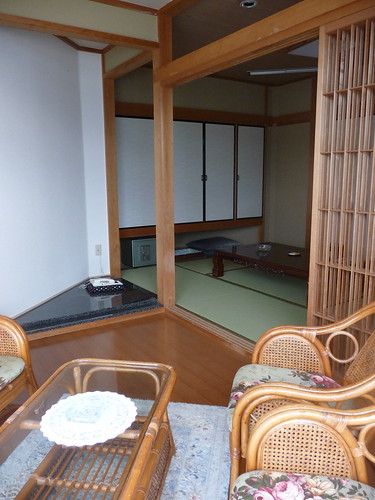
They really packed the kids in at this stop -- five or six to a room -- and because it was a ryokan, they were expected to use the public bathing area in the neighboring onsen. However, not only did my room have a private bath, I was also given access to a private room in the onsen. O baby, o baby!
Ah, hair liquid, medicated brace up lotion, and milky lotion -- all my toilet essentials.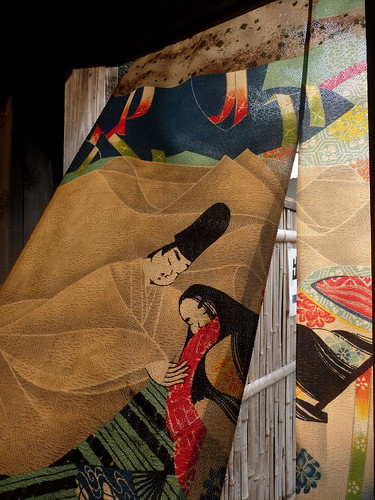
Curtained doorway leading into my private room in the onsen, where I headed for a brief but relaxing getaway from teacher duty.
My little pool, fed by a nearby hot spring, which I got all to myself!
My only visitor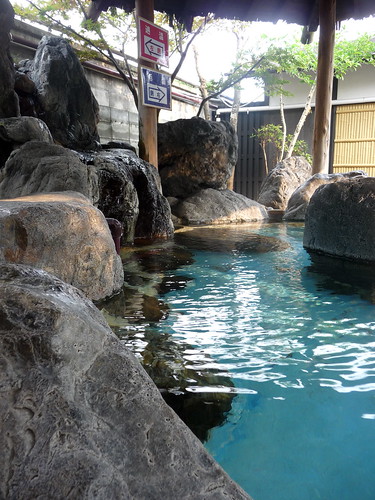
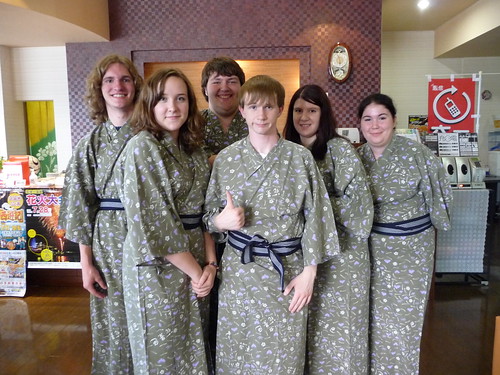
After my little soak, I headed back to the hotel and got the kids suited up in their yukata for dinner. Kawaii desu ne? (Aren't they cute?)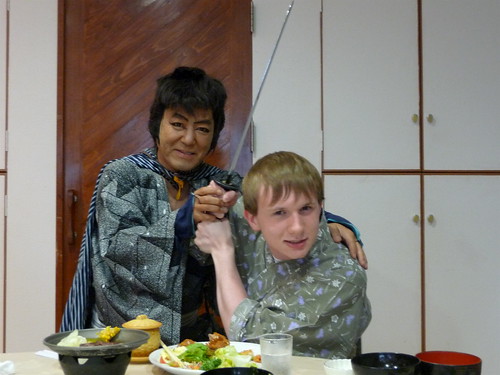
Part of our evening's entertainment included a "samurai" -- who pretty much just ran around the dining hall menacing people with his katana -- and a rollicking round of karaoke during which the boys and I sang *NSYNC's ever-beloved "Bye Bye Bye". And did the dance (obviously). All the students from the other groups said, "Why isn't our teacher that cool?" Or at least, that is what I presume they were whispering to each other after our show-stopping performance.
Speaking of show-stopping, the karaoke ended abruptly when the proprietor told us our time was up and hustled us out... and then proceeded to stand alone in front of the empty dining hall and continue singing by himself. Yep.
The kids, unable to cope with the fact that our trip was coming to an end (and not anxious to go back to their sardine-style sleeping arrangements), spent the rest of the night in my room playing cards and talking about how awesome Japan is.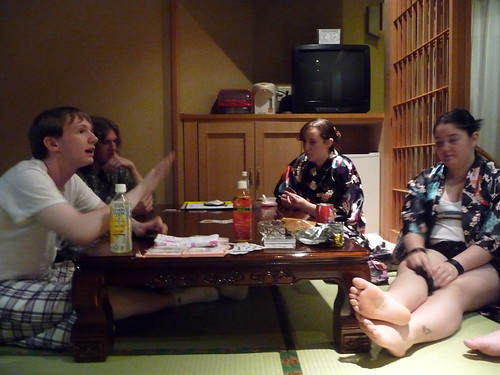
by
G
at
8:57 PM
0
comments
![]()
Labels: Fukuoka, i change kids' lives (FOREVER), japan, karaoke, ryokan, traveling abroad
Second Day in Nagasaki: Glover Gardens

Nestled in the mountains, Nagasaki is a tremendously beautiful city. In some places, the roads are so steep that the houses are virtually built on top of, rather than next to, each other.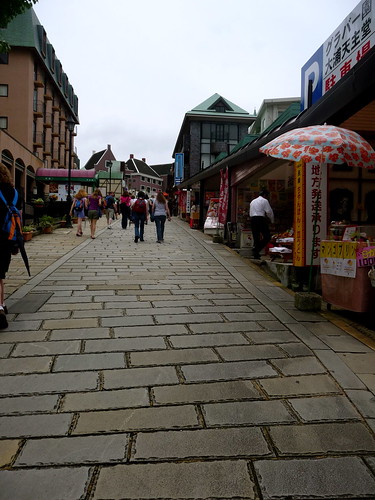
The steep streets in the old European district, called "Hollander Slopes" after the Dutch merchants who lived there, are lined with little shops, perfect for strolling and window-shopping.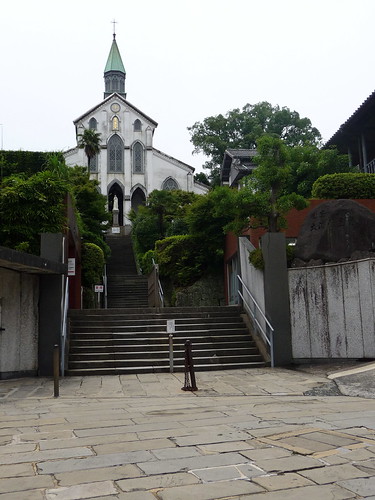
Built in 1856, Oura Catholic Church in Nagasaki is the oldest Christian church in the Orient. It is also called The Church of the 26 Martyrs and faces Nishizaka hill, where twenty-six Christian martyrs were crucified by the local shogun in 1597. The church is known worldwide as a symbol of surviving religious persecution.

We also enjoyed Glover Garden, built on the estate of Scottish entrepreneur Thomas Glover. The house has been converted into a museum, and the surrounding gardens are exquisite.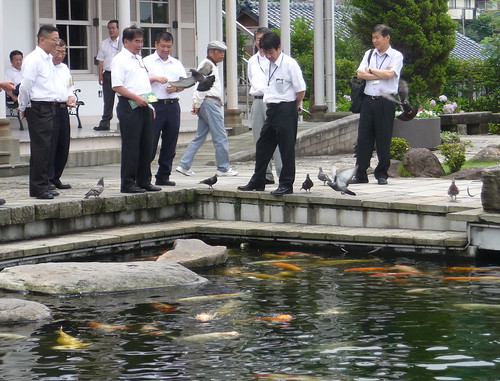



My boys get into the macro zoom. Ah, they make me proud!
The same night, we walked around near our hotel, hit up a karaoke parlor, and got ourselves some takoyaki.
Gotta love those NOVA signs. O, how they haunt me!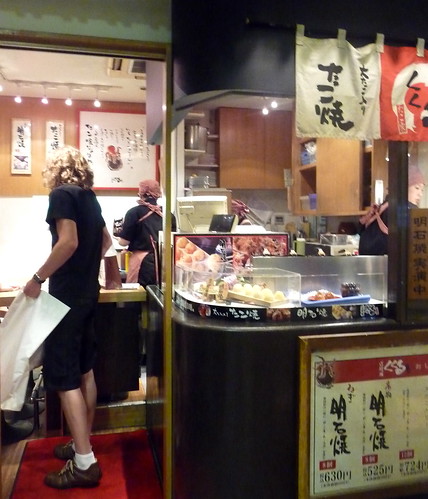
The kids loved the octopus balls so much they bought a few more to have for fourth meal at the hotel.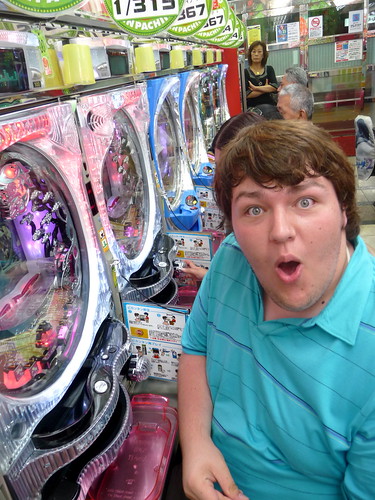
We thought it appropriate to make one more stop in a pachinko parlor before we went home so that Ryan could blow the rest of his yen.
by
G
at
6:13 PM
0
comments
![]()
Labels: Glover Garden, japan, Nagasaki, traveling abroad
Monday, July 27, 2009
Mt. Inasa and the Nagasaki A-Bomb Memorial
We started our first day in Nagasaki by taking the bus up to Mt. Inasa. We were assured, when we shelled out the thousands of dollars for this trip, that the view of Nagasaki from Inasa was one of the most breath-taking in Japan. We will just have to take their word for it.
The kids enjoyed a touristy photo op before we hopped on the cable car.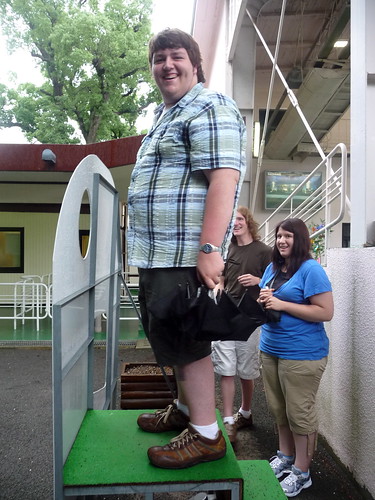
The photo came out well despite the fact that Ryan is approximately twice the height of this particular attraction's target demographic.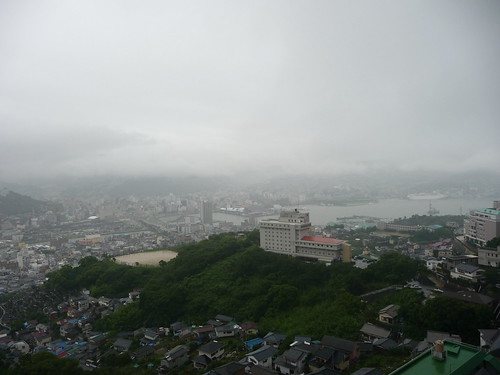
We got a fleeting glimpse of the city as the cable car took us deeper and deeper into the mist. By the time we reached the lookout on the top of the mountain, we were surprised to see that the view from Mt. Inasa looked shockingly like the view of Mt. Aso we had had a few days before.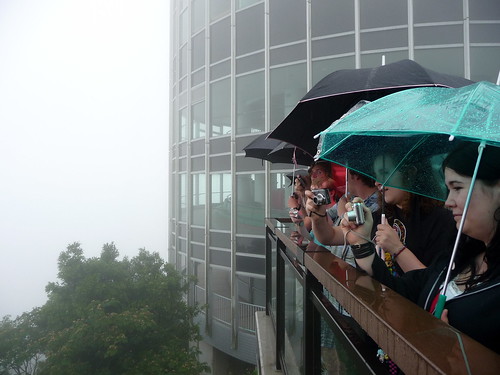
The most thrilling part of our visit to Mt. Inasa actually came as we were hiking back down from the summit to the cable car and RJ spotted the one thing he really came to Japan to see: a dreaded mukade. Now, what you have to keep in mind is that at this point, I had literally been telling mukade stories to some of these kids for three years, so they were basically prepared for the thing to leap up at them, its jaws slung with bloody slather and eyes lit by the fires of Hades' own eternal damned kingdom.
Fortunately, as you can see from the photo (courtesy of RJ), it was not only a rather small mukade but also a decidedly dead one. Whew! Dodged a bullet there!
On our first full day in Nagasaki, we went to the atomic bomb memorial. Unlike the Hiroshima museum, which is a large building in the middle of a wide open space leveled by the bomb, the Nagasaki A-Bomb Museum is built underground. While it contains many of the same type of photographs, mementos, and exhibits that we saw at the Hiroshima museum, the difference in atmosphere between the two was incredible.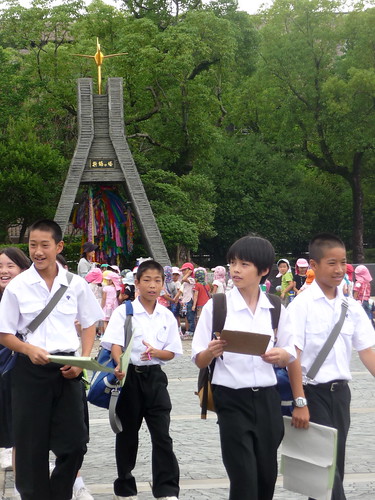
While the Hiroshima museum had been silent and virtually empty, the Nagasaki museum and the surrounding gardens were over-flowing with Japanese students of all ages. Inside the museum, many of them were on scavenger hunts, racing from exhibit to exhibit trying to find the information they needed for their assignments. Outside, older students were there with their Peace Studies classes, stopping museum visitors and having them fill out surveys about their reactions to the museum and their thoughts about the atomic bomb specifically and war in general. They were nervous and giggly about using their English to talk to us, but they were also wonderfully friendly and welcoming and I had a great time talking with them and making them laugh with my rubbish Japanese.

Though the outdoor memorial featured plenty of origami cranes and centered on a beautiful pool just as the Hiroshima memorial had, the atmosphere was lively and refreshing, and Nagasaki Peace Park, which includes statues about peace from artists all over the world, is much more extensive than the memorial park in Hiroshima.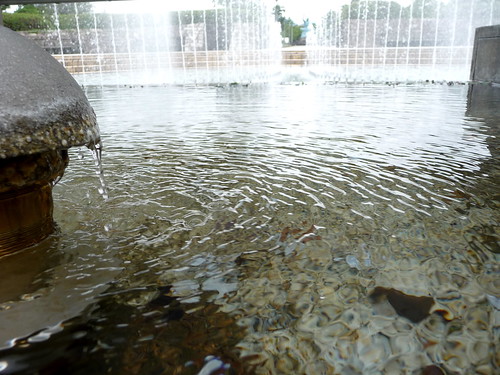
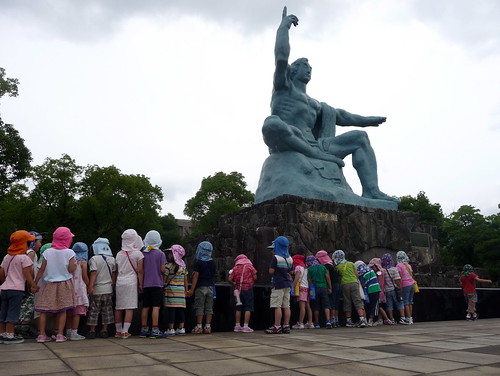
Peace Statue, which is the focal point of Nagasaki Peace Park sits on top of an infinity pool. His right hand points up as a reminder of the bomb, but his left hand is extended as a symbol of peace.
A Japanese student plays with the water at the edge of the infinity pool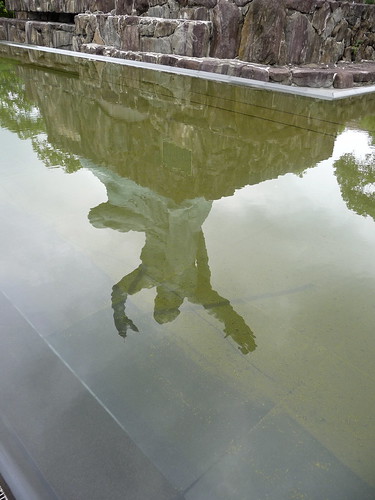
Peace Statue reflected in the infinity pool -- While the Hiroshima memorial is centered on the idea of remembering the tragedy of the atomic bombing, the Nagasaki memorial is focused on the notion of healing and of promoting peace around the world.
by
G
at
4:04 PM
0
comments
![]()
Labels: a-bomb memorial, famous places, japan, Nagasaki, peace, places to go
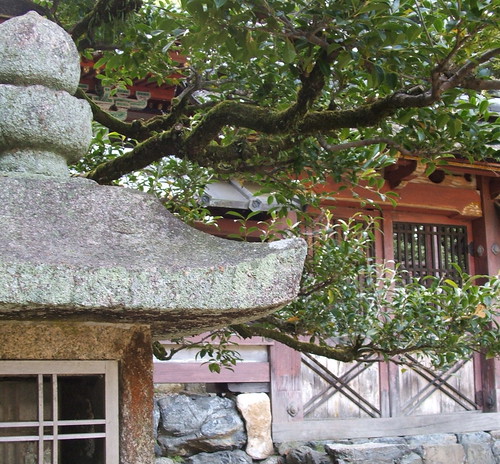
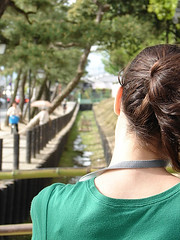
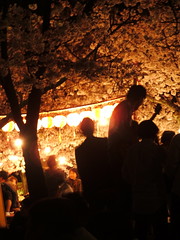


 Stumble It!
Stumble It!





